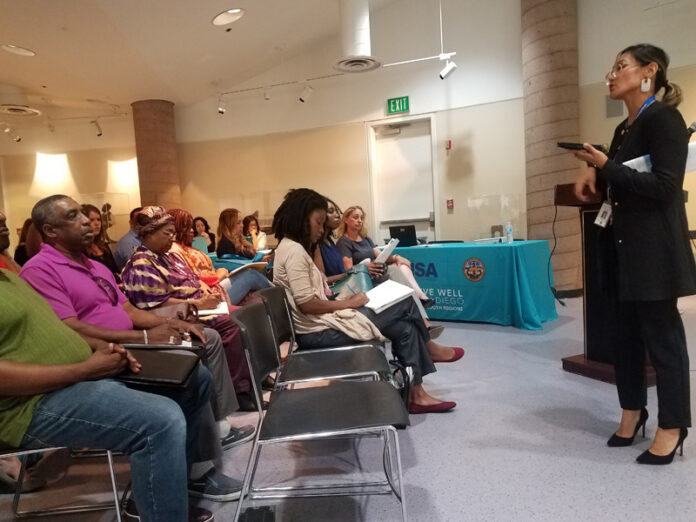
Photos and article by Shea McGee
Contributing Writer
Oct. 10, 2019 – A conference was held by the county-funded Live Well Neighborhoods program, aimed at creating services that would benefit underserved communities and their inhabitants; mainly children, youth, and families in said communities. During this conference, however, was a discussion about the Request for Proposal concerning the San Diego Promise Zone, a zone that spans 6.4 miles through Southeastern San Diego to East Village in San Diego. Amongst the gathering were interested contractors as well as those interested in being a subcontractor.
As the meeting went underway, Melanie Caramat with the County of San Diego began to give highlights of what the meeting would entail. It included the due dates for all proposals to be turned in as well as any questions or concerns that were requested to be in writing. All proposals to be a part of the contract are to be signed and turned in online by February 18, 2020. Organizations may submit their questions on BuyNet (buynet.sdcounty.ca.gov RFP #9412) until November 8th at 4pm.
Next up to speak was Barbara Jimenez, also with the County of San Diego. She broadly discussed how contracts were to be requested, and that questions and concerns were highly encouraged. Their hope was to bring in new contractors for this RFP in the Promise Area, and that the funds for the region would be allocated to one prime who would then work with several subcontractors. “[The community] needs conversations regarding what the community needs,” Barbara said during the meeting as questions began to come in. “It’s an opportunity to be creative and innovative.”
One female attendee in her early 30’s asked why it had taken so long for this to get underway, Barbara answered that it took so long because they “wanted it to be intentional, to give knowledge” and that this was an “opportunity for creativity” and a need for “different groups to work together that hadn’t before.”
Barbara continued on with the discussion, making all parties aware that the Prime contractor would be receiving the funding, and this was met with many questions and concerns, but no answers came straight away. It was indeed a risk, but one Barbara felt could benefit the communities the proposal would affect. A concerned attendee of the conference wanted to know how would small organizations get matched with larger organizations, and another attendee made mention that networking would be ideal. A large number of those that heard the advice agreed that networking and meeting with these organizations would be best, to possibly match themselves.
A male attendee in his early-40s mentioned how the county would make sure that the smaller organizations didn’t get lost in the development of this “innovative, inclusive process,” and that the county was “responsible for making sure it is indeed an inclusive process.” Others mirrored his sentiment.
Most of the attendees’ worries had to deal with who the Prime Contractors would be, how they’d be matched with the Subcontractors, and how could it work without anyone feeling left out of the process. Barbara suggested the more the better in terms of pairing with a Prime if you were a Sub. It was asked whether “innovation means the old way wasn’t effective,” were the “old dogs,” meaning prior contractors, going to get the contracts again? It was felt a broken cycle kept regurgitating, with no one to halt it, but the answer was that the county is working with others whom they hadn’t before, who didn’t have the opportunity before.


